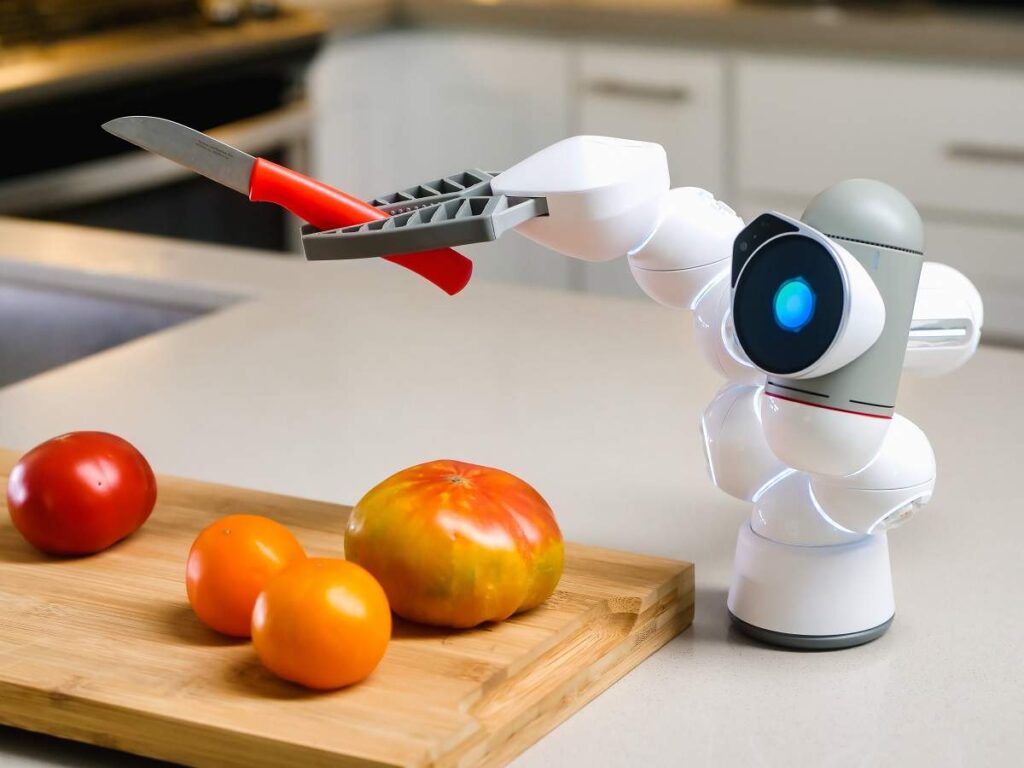
While advancements in artificial intelligence (AI) have the potential to automate various tasks and reshape the job market, it is important to note that AI is more likely to augment jobs rather than completely replace them.
However, certain roles and tasks may be significantly impacted by AI in the future.
Here are ten examples:
1. Data entry and administrative assistants
AI-powered automation tools can efficiently handle repetitive data entry tasks and administrative duties, reducing the need for human intervention.
2. Customer service representatives
AI chatbots and virtual assistants are increasingly being used to handle customer inquiries and support requests, providing quick responses and problem-solving capabilities.
3. Drivers and delivery personnel
With the emergence of autonomous vehicles, the need for human drivers in sectors like ride-sharing, trucking, and delivery services may decrease over time.
4. Manufacturing and assembly line workers
AI-powered robots and automation systems can perform repetitive and physically demanding tasks on assembly lines, potentially reducing the need for human workers.
5. Financial analysts
AI algorithms can analyze vast amounts of financial data and make predictions, which can impact the role of traditional financial analysts in tasks such as data analysis and risk assessment.
6. Retail workers
With the rise of e-commerce and automated checkout systems, there may be a decrease in the number of retail workers needed for tasks like inventory management and point-of-sale operations.
7. Data analysts
While AI can assist in data analysis tasks, humans will still play a crucial role in interpreting and applying insights to make informed decisions. Therefore, the role of data analysts may evolve rather than being fully replaced.
8. Telemarketers
AI-powered voice recognition and natural language processing technologies can be used to automate telemarketing tasks and generate personalized responses, reducing the need for human telemarketers.
9. Receptionists
AI-powered chatbots and virtual receptionists can handle basic inquiries, appointment scheduling, and visitor management, potentially reducing the need for human receptionists in some settings.
10. Security guards and surveillance operators
AI-powered surveillance systems can monitor and analyze video feeds, detect anomalies, and raise alerts, reducing the requirement for human security personnel in certain scenarios.
It is worth emphasizing that while AI can automate certain tasks within these professions, it also creates new opportunities for humans to focus on higher-level work that requires creativity, critical thinking, emotional intelligence, and problem-solving skills. Therefore, it is crucial to adapt and acquire new skills to remain relevant in the changing job landscape.

Most amazing advancements in AI technology as of now
There have been numerous advancements in AI technology in recent years. Here are some of the top advancements that have had a significant impact:
a. Deep Learning
Deep learning, a subfield of machine learning, has made remarkable progress. Deep neural networks with multiple layers can learn hierarchical representations of data, enabling breakthroughs in image and speech recognition, natural language processing, and more.
b. Generative Adversarial Networks (GANs)
GANs are a class of machine learning models that can generate synthetic data that closely resembles real data. They have been used to create realistic images, generate realistic text, and even simulate human voices.
c. Reinforcement Learning
Reinforcement learning involves training agents to make sequential decisions by learning from their interaction with an environment. It has been successfully applied in game playing (such as AlphaGo and OpenAI’s Dota 2 bot), robotics, and autonomous systems.
d. Natural Language Processing (NLP)
NLP has made significant strides, enabling machines to understand and generate human language. Language models like OpenAI’s GPT-3 have demonstrated impressive text generation capabilities and have been utilized for various applications, including content creation and customer service.
e. Computer Vision
Computer vision has seen remarkable advancements, enabling machines to analyze and understand visual data. Convolutional Neural Networks (CNNs) have achieved state-of-the-art performance in tasks such as image classification, object detection, and image segmentation.
f. Transfer Learning
Transfer learning allows pre-trained models to be fine-tuned for specific tasks with limited amounts of task-specific data. This approach has improved the efficiency and effectiveness of AI models and reduced the need for extensive training on large datasets.
g. Explainable AI (XAI)
As AI systems become more complex, the ability to understand and interpret their decisions becomes increasingly important. XAI aims to provide insights into AI models’ decision-making processes, allowing humans to understand and trust their outcomes.
h. Robotics and Automation
AI technologies are being integrated with robotics to create intelligent autonomous systems. Robots are becoming more capable of perceiving and interacting with their environment, leading to advancements in areas such as industrial automation, healthcare assistance, and self-driving vehicles.
i. Edge Computing
Edge computing involves performing AI computations closer to the data source, reducing latency and enhancing real-time decision-making. This advancement is particularly relevant for applications in autonomous vehicles, Internet of Things (IoT), and remote areas with limited connectivity.
j. Ethical AI and Bias Mitigation
There is a growing emphasis on ensuring that AI systems are fair, transparent, and accountable. Researchers and organizations are actively working on developing frameworks and techniques to address biases, promote ethical AI practices, and mitigate unintended consequences.
These advancements collectively contribute to the growing capabilities of AI and its impact on various industries and aspects of our lives. Continued research and development in these areas will likely lead to further breakthroughs and transformative applications of AI technology.


